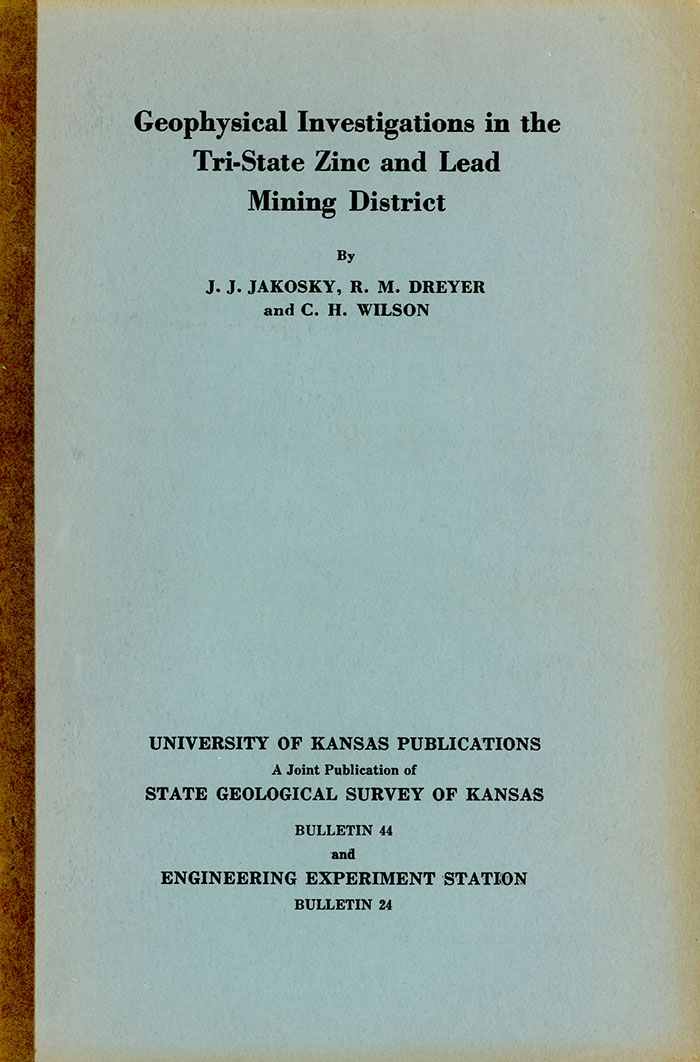Geophysical Investigations in the Tri-State Zinc and Lead Mining District
by J. T. Jakosky, R. M. Dreyer, and C. H. Wilson
Prepared by the State Geological Survey of Kansas and the Engineering Experiment Station, University of Kansas, in cooperation with the Tri-State Zinc and Lead Operators' Association and the Kansas Industrial Development Commission.

Originally published in 1942 as Kansas Geological Survey Bulletin 44. This is, in general, the original text as published. The information has not been updated. An Acrobat PDF version (30.6 MB) is also available.
Foreword
For many years the area known as the Tri-State Zinc and Lead Mining District, comprising territory in southwestern Missouri, southeastern Kansas, and northeastern Oklahoma, has been the most important zinc-producing area, not only of the United States, but in the world. A very large tonnage of lead is obtained annually from this district also, together with some cadmium and great quantities of the prominently siliceous residue of mining operations which is known as chat. Earliest developments were in the Missouri part of the field, centering around Joplin, Webb City, Granby, and Oronogo; considerable ore was produced also just west of the Missouri boundary, near Galena, Kansas. In 1915, great bodies of ore were discovered at Picher, Oklahoma, and this led to intensive exploration and development in many square miles of northeastern Oklahoma and in areas around Baxter Springs and Treece, Kansas. Large demands for zinc and lead during World War I were readily met by exploitation of the rich, newly discovered ore bodies in the Tri-State area.
The zinc and lead situation in World War II, especially in regard to production from the Tri-State zinc and lead mining district, is like the earlier war period in its stimulus to the output of ore, but the situation is materially different now as regards the known reserves of readily mined ore bodies. Naturally, the huge quantities of zinc and lead sulphides that have been brought to the surface from Tri-State mines and shipped to smelters constitute a depletion of great magnitude. Continuation of mining operations and prolongation of prosperous economic conditions that are incident to production of zinc and lead call for additions to the known reserves of unmined ore. Explorations must be greatly extended and intensified. If new techniques in exploratory work can be developed, they may be a critical factor in the efforts to find large new quantities of valuable ore. Especially if new techniques in the search for zinc and lead ore offer advantages in speed and economy, they are to be rated as having increased importance and desirability.
Raymond C. Moore,
State Geologist and Director, State Geological Survey of Kansas.
Kansas Geological Survey, Geology
Placed on web Oct. 29, 2018; originally published December, 1942.
Comments to webadmin@kgs.ku.edu
The URL for this page is http://www.kgs.ku.edu/Publications/Bulletins/44/index.html